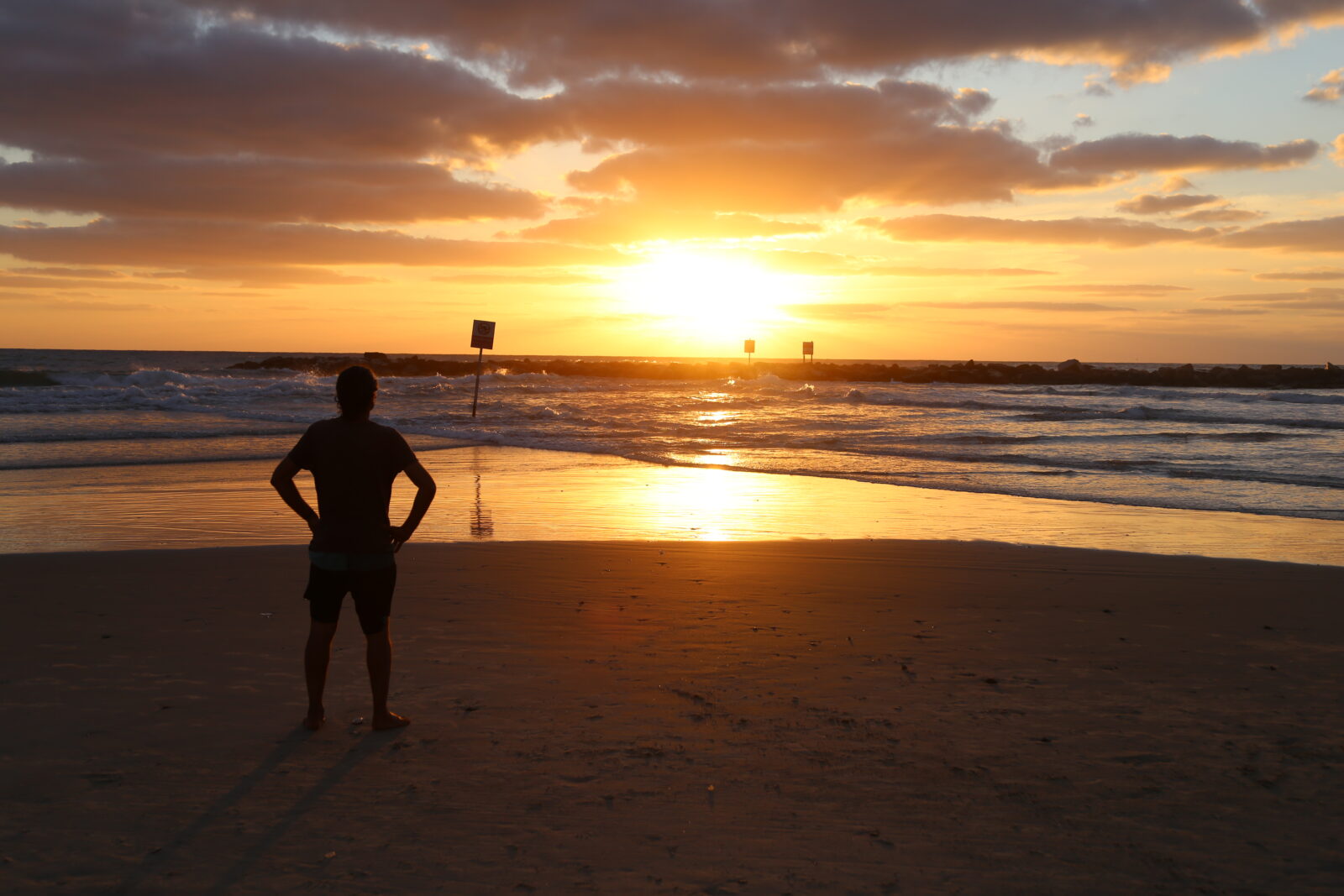
The Sea
The Sea in Israel:
Red Sea
The Red Sea
Arabic: البحر الأحمر Al Baḥr al aḥmar, Hebrew: Yam Soof ים סוף or HaYam HaAdom הים האדום
Seawater inlet of the Indian Ocean, lying between Africa and Asia.
Its connection to the ocean is in the south, through the Bab el Mandeb strait and the Gulf of Aden. To its north lie the Sinai Peninsula, the Gulf of Aqaba, and the Gulf of Suez (leading to the Suez Canal). It is underlain by the Red Sea Rift, which is part of the Great Rift Valley.
The Red Sea has a surface area of roughly 438,000 km2 (169,100 mi2), is about 2250 km (1398 mi) long, and — at its widest point — 355 km (220.6 mi) wide. It has an average depth of 490 m (1,608 ft), and in the central Suakin Trough it reaches its maximum depth of 3,040 m (9,970 ft).
The Red Sea also has extensive shallow shelves, noted for their marine life and corals. The sea is the habitat of over 1,000 invertebrate species and 200 types of soft and hard coral. It is the world’s northernmost tropical sea, and has been designated a Global 200 ecoregion.
Mediterranean Sea
The Mediterranean Sea is a sea connected to the Atlantic Ocean, surrounded by the Mediterranean Basin and almost completely enclosed by land: on the north by Southern Europe and Anatolia, on the south by North Africa, and on the east by the Levant.
Although the sea is sometimes considered a part of the Atlantic Ocean, it is usually referred to as a separate body of water.
Geological evidence indicates that around 5.9 million years ago, the Mediterranean was cut off from the Atlantic and was partly or completely desiccated over a period of some 600,000 years during the Messinian salinity crisis before being refilled by the Zanclean flood about 5.3 million years ago.
It covers an area of about 2,500,000 km2 (970,000 sq mi), representing 0.7% of the global ocean surface, but its connection to the Atlantic via the Strait of Gibraltar—the narrow strait that connects the Atlantic Ocean to the Mediterranean Sea and separates Spain in Europe from Morocco in Africa—is only 14 km (9 mi) wide.
In oceanography, it is sometimes called the Eurafrican Mediterranean Sea, the European Mediterranean Sea or the African Mediterranean Sea to distinguish it from mediterranean seas elsewhere.
The Mediterranean Sea has an average depth of 1,500 m (4,900 ft) and the deepest recorded point is 5,267 m (17,280 ft) in the Calypso Deep in the Ionian Sea. It lies between latitudes 30° and 46° N and longitudes 6° W and 36° E. Its west–east length, from the Strait of Gibraltar to the Gulf of Iskenderun, on the southeastern coast of Turkey, is about 4,000 kilometres (2,500 mi).
The sea was an important route for merchants and travelers of ancient times, facilitating trade and cultural exchange between peoples of the region. The history of the Mediterranean region is crucial to understanding the origins and development of many modern societies. The Roman Empire maintained nautical hegemony over the sea for centuries.
Dead Sea
The Dead Sea (Hebrew: יָם הַמֶּלַח About this soundYam ha-Melah lit. Sea of Salt; Arabic: البحر الميت About this soundAl-Bahr al-Mayyit or Buhayrat, Bahret or Birket Lut, lit. “Lake/Sea of Lot”) is a salt lake bordered by Jordan to the east and Israel and the West Bank to the west.
It lies in the Jordan Rift Valley, and its main tributary is the Jordan River.Its surface and shores are 430.5 metres (1,412 ft) below sea level, Earth’s lowest elevation on land.
It is 304 m (997 ft) deep, the deepest hypersaline lake in the world. With a salinity of 342 g/kg, or 34.2% (in 2011), it is one of the world’s saltiest bodies of water – 9.6 times as salty as the ocean – and has a density of 1.24 kg/litre, which makes swimming similar to floating. This salinity makes for a harsh environment in which plants and animals cannot flourish, hence its name. The Dead Sea’s main, northern basin is 50 kilometres (31 mi) long and 15 kilometres (9 mi) wide at its widest point.
The Dead Sea has attracted visitors from around the Mediterranean Basin for thousands of years. It was one of the world’s first health resorts (for Herod the Great), and it has been the supplier of a wide variety of products, from asphalt for Egyptian mummification to potash for fertilisers.